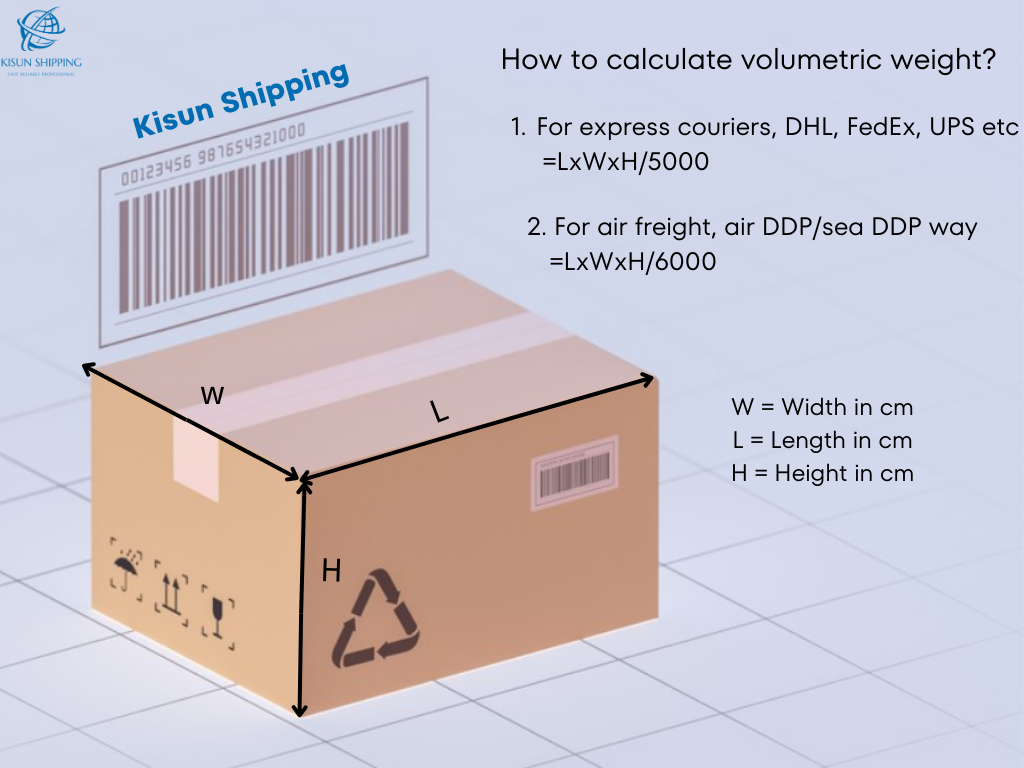Between gross weight and volume weight, the chargeable weight is typically determined by the higher of the two. So, whichever weight—gross or volume—is greater will usually be considered the chargeable weight for shipping purposes.
Gross weight and volume weight are two different concepts used in logistics and shipping to determine the cost of transporting goods. Here’s a brief explanation of each.
What is chargeable weight?
Chargeable weight is a term commonly used in the transportation and logistics industry, particularly in air freight and air DDP and sea DDP shipping way. It refers to the weight used by carriers to calculate the cost of transporting goods.
So what’s the chargeable weight subject to? Typically determined by comparing the actual weight (gross weight)of the shipment to its volumetric weight.
What is Gross Weight?
Gross Weight: Gross weight refers to the total weight of a package or shipment, including the weight of the actual items being shipped as well as the weight of the packaging materials used to protect and contain them. It is typically measured in kilograms (kg) or pounds (lb). Gross weight is often used as a basis for calculating shipping costs, especially for services where charges are based solely on weight.

What is Volume Weight?
Volume Weight (or Dimensional Weight): Volume weight, also known as dimensional weight, is a calculation used by shipping companies to account for the space that a package occupies about its actual weight.
It is calculated based on the package’s dimensions (length, width, height) and a volumetric divisor provided by the carrier. The formula for calculating volume weight varies between carriers, but it generally involves multiplying the package’s dimensions and dividing by the volumetric divisor.
The result is then compared to the actual weight of the package, and the higher of the two values is used to determine the shipping cost. This is done to ensure that lightweight, bulky items are charged appropriately based on the space they occupy in the carrier’s vehicles.

How to estimate your shipment’s chargeable weight?
The best way is to make sure that the boxes weight and size information are provide accurately by your product supplier.
In many cases, we find that once the cargo is picked up, it turns out to be larger than expected. A common reason for this is the supplier usually give buyer theroritical box size, not the size after their warehouse measures. This will affect weight and volume. The more you know about how your product is packaged and accurate size&weight, the more accurate our quote will be.
Can volumetric weight be avoided?
To save the shipping cost, you may want the gross weight as chargeable weight instead of volumetric weight, in some degree, yes, volumetric weight can be avoided or at least reduced. Try making your package as small as possible. You can discuss it with your supplier when placing order. And to meet the international shipping packages requirments, we’d
However, it’s important to recognize that volumetric weight serves a vital purpose for freight companies in maintaining their high-quality service. It ensures fair charges for sellers shipping large, lightweight items that occupy more space than small, heavy packages.

Gross weight is the total weight of a shipment, including its packaging. Volume weight, on the other hand, is a calculated weight based on the size of the package compared to its actual weight. It’s used to determine shipping costs for lightweight but bulky items. Both gross weight and volume weight can affect shipping costs, depending on the carrier’s rules and the nature of the items being shipped.
Want to know more about shipping from China? Contact us now!


